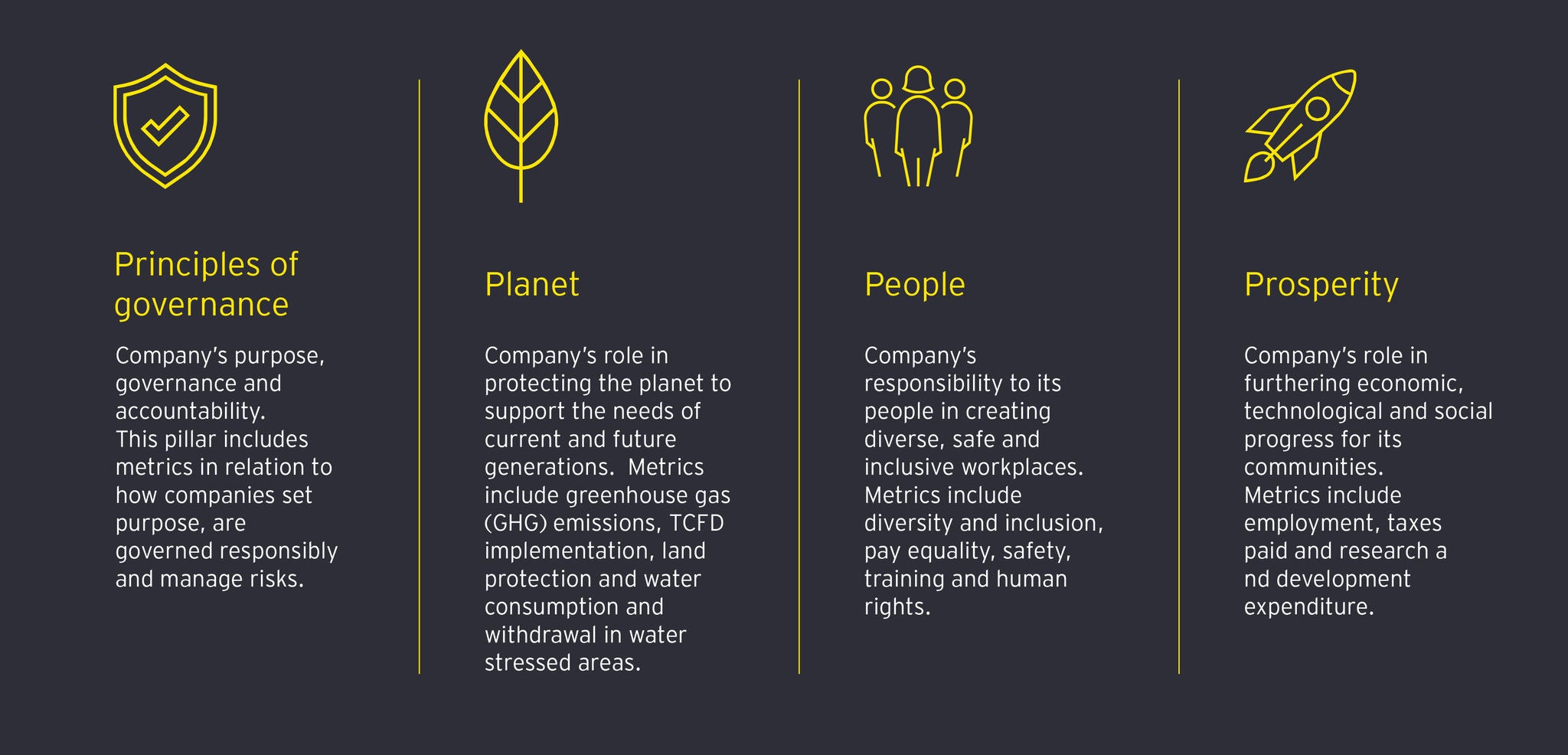EY refers to the global organization, and may refer to one or more, of the member firms of Ernst & Young Global Limited, each of which is a separate legal entity. Ernst & Young Global Limited, a UK company limited by guarantee, does not provide services to clients.
How EY can help
-
EY Long-term value teams can help you shape your strategy, drive transformation and measure progress in providing sustainable value through use of the WEF-IBC’s common metrics. EY leading role in developing the metrics means we’re uniquely placed to advise on their adoption and impact.
Read more
Sustainable value creation
The good news is, so far, there’s buy-in for the stakeholder capitalism movement at all levels: C-suites and boards know it’s important to ask strategic questions and forge a better path forward, and employees and consumers are demanding they do so. And investors are putting money where the strategy is: Assets invested in ESG funds are expanding rapidly and companies aligned to delivering long-term value enjoy lower costs of capital.
So, how does ESG disclosure fit into a business leader’s overall long-term strategy? The WEF-IBC project has called on the participation of experts from different functions within organizations – including the CEO, Chief Sustainability Officer, Chief Financial Officer, Chief Risk Officer and Chief Strategy Officer – a sign ESG disclosure is core to overall strategy, not marginal. Importantly, even if the disclosures are the correct first step, these functions should spend some time taking a fresh look at how the company delivers value across their workforce, customers, society and shareholders.
Each area has an important role to play, and the integration of ESG into corporate strategy presents an opportunity to drive differentiation in how your company delivers long-term value across stakeholders.





